I manage Yammer networks for a Jewish non-profit organization. We have used Yammer, the Microsoft enterprise social network, for seven years and it has proven to be an invaluable tool. For members of our staff, and for members of our larger international community, it has been a wonderful way to share information, to access the experience and expertise of others, and to expand our networks and connections.
In November, 2018 I wrote about how Yammer helped us to respond to the tragic shooting of 11 people at Tree of Life Synagogue in Pittsburgh, PA during Saturday morning Shabbat worship. Yammer helped our staff connect in real time as we prepared to respond to the evolving events of the day, and then it helped us share vital information with lay and professional leaders throughout our organization as together we shared messages of support and concern.
In March, 2020 Yammer helped us respond again, but maybe more importantly, Yammer helped us cope. As the title of this article suggests, Yammer helped us “Pandemic.” Which is to say that Yammer helped us to stay connected during a very difficult time. Yammer helped us take our mind off work, and yet it helped to strengthen our work connections. Yammer helped us to be creative, Yammer helped us to share, and Yammer made it possible to continue our important work during a time of work reductions, layoffs, and a general sense of stress and worry that was spreading around the world almost as fast as COVID-19.
It started with Alexandra. I know Alexandra, but unfortunately I don’t know Alexandra very well. She lives pretty close to me, but we work in two very different parts of our organization so our paths don’t cross that often. In a way, the fact that I don’t know Alexandra very well makes this whole story a bit more special.
Because, in our organization, I am the Yammer guy. I am the guy who knows about Yammer, who promotes Yammer, and who encourages use of Yammer. Often, if there is a new community in our Yammer network, it is because I created it, or I suggested it. I often suggest posts or new conversations, and I often urge colleagues to share information in one of our many Yammer communities.
Then, one day in March of 2020, I saw a new community (discussion group) appear on my Yammer feed. A community I did not know about. A community I did not create. It was called Pandemic Potluck — share pics & stories of all the wonderful food you are making & eating.
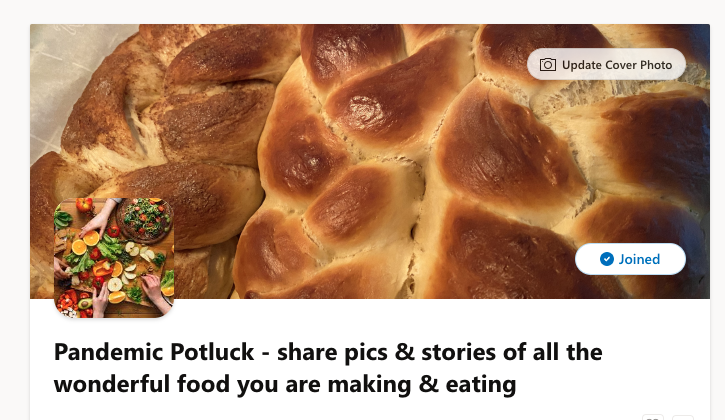
OK, so I may have added a photo of some challahs I had recently made at home (the one on the left is cinnamon sugar….yum!) to the community header, but the idea for the community was all Alexandra’s. She didn’t pass the idea by me. She didn’t ask if she could create a new community, or how to create a community. We were all now under “stay at home” orders, restaurants were closed, and we were all cooking and baking at home with new creativity, and new fervor and interest. So Alexandra created a community for our staff, and made the first post with a picture of dinner that she made that evening.
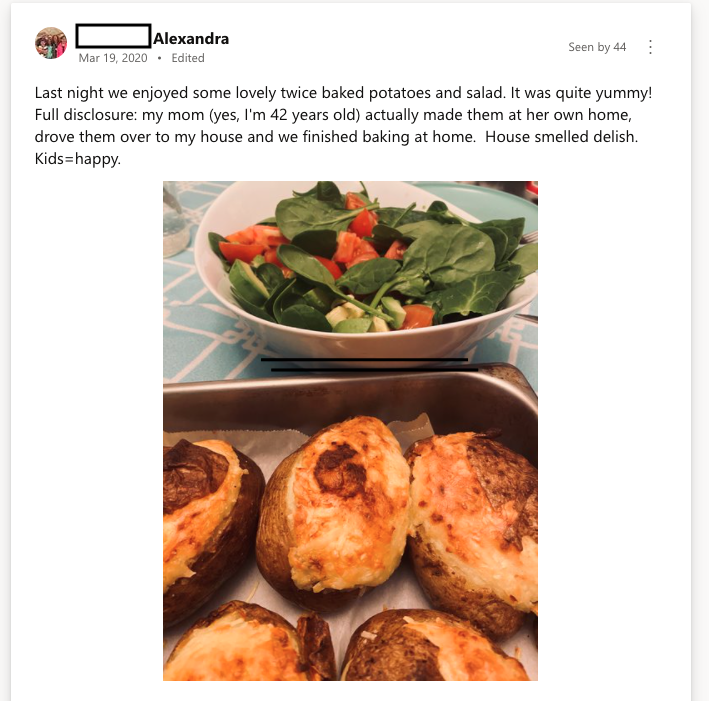
Just to be clear, Alexandra did not feel she needed to connect with me before creating this new community, and that was a good thing. A very good thing. Yammer provides all users the opportunity to lead. If a question is posted, any user can provide a valuable answer. Any user can create a new community. Any user can share a resource that can help others throughout the organization. Everyone is empowered.
Soon, everyone was sharing in the Pandemic Potluck group. We were sharing photos of the breads and challahs we were creating. We shared photos of dinners we made, and photos of our kids helping us cook.
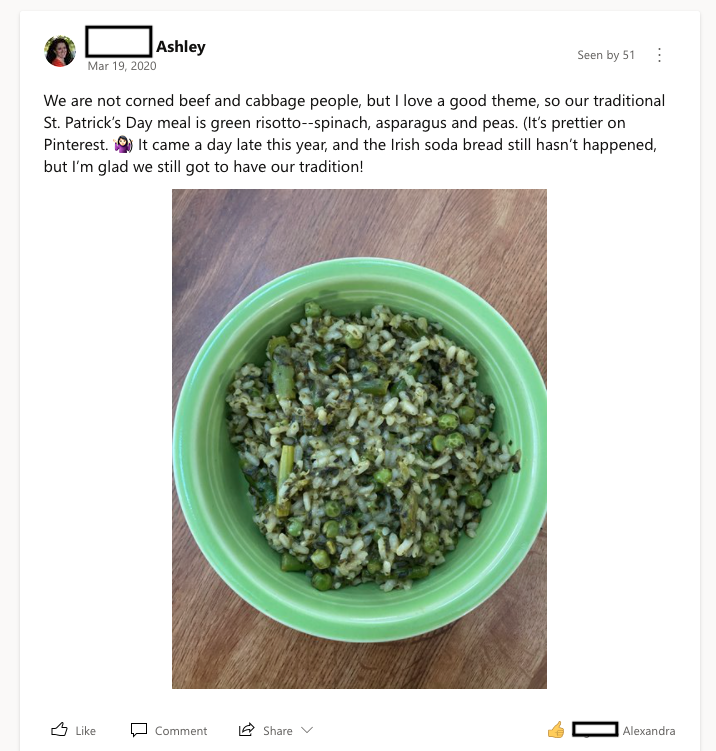
St. Patricks Day came along in March of 2020, and Ashley posted a photo of her vegetarian take on corned beef and cabbage.
And our group was growing. And people had made the Pandemic Potluck community a Yammer “favorite” of theirs,. It would stay pinned on the left side of their Yammer screen so it would always be easy to see, and easy to return to. We all eagerly checked each day to see what new, yummy culinary masterpieces people were making.
Things were getting serious.
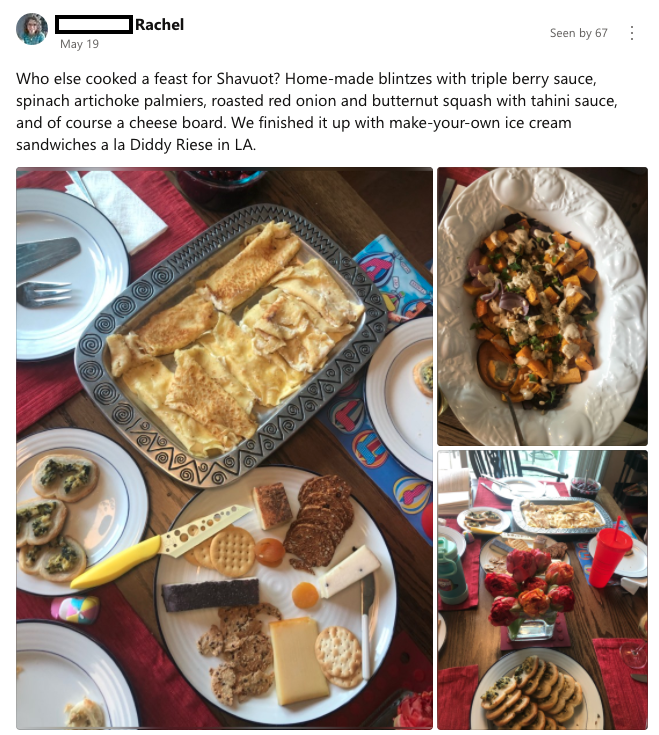
We thought the group was a busy, robust space for our staff, and SWOOP, our analytics tool, confirmed our suspicions.
Because of SWOOP, we could easily see that 66% of all posts in Pandemic Potluck got a reply of some kind, and 99% of the posts were “liked” by community members. 81% of posts got a reply in 24 hours.
Pandemic Potluck was a busy place!
65% of the community members were active, and because it was a public community accessible by people throughout our organization even if they had not clicked the “Join” button, we learned that 100% of non-Pandemic Potluck community participants were active. The connections were meaningful. The conversations were robust.
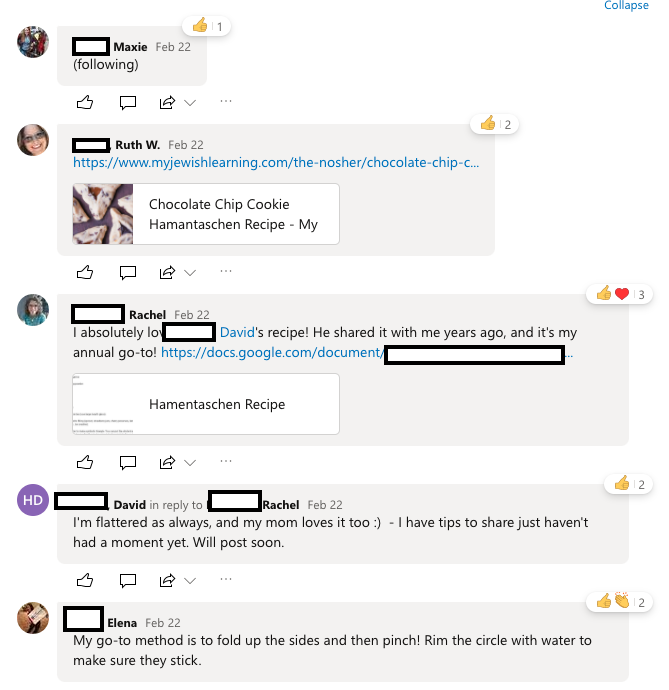
People from different teams had begun to post photos of their delicious foods in Pandemic Potluck. People who had never met or worked together before were now creating close connections. We were now all talking about cooking, and family, and health, and self care in our business enterprise social networking platform.
And then, our lockdown took a seriously unfortunate turn. In response to the economic slowdown caused by the pandemic, our organization would be forced to lay off a number of our colleagues. Except of course, they were all more than colleagues. They were friends, they were trusted advisors and people we worked closely with every day. We knew their strengths at work, and we knew they made an amazing looking chocolate chip cookie.
But because of groups like Pandemic Potluck, and also Peloton Riders, and Our Favorite Things, we were prepared for these changes at work in ways we could have never expected.
Yammer let us work out loud. Because Yammer let’s everyone create a community, and that community could be public to everyone in the network (which is great), or private to a particular team (good, but not quite as great), employee engagement happened organically by focusing on subjects that people were passionate about. Those passions fueled connections, and those new unplanned connections propelled us to new levels of success, even though we were now a smaller team.
We couldn’t have planned this if we tried. People may have avoided joining the Pandemic Potluck community if it had been created by management. Maybe they would have been suspicious as to its true intention. Maybe they just would have determined that, since it was created by an executive, it was not really for them.
In no small measure, Yammer helped our organization get through the pandemic. Because of the transparency it provided, the collaboration it encouraged, and the functionality we took advantage of, we connected. We connected over food. And family. And passion. And shared interests. And then work.
In fact, as a sweet and touching end to this tale of the Pandemic Potluck community, one of our colleagues who had been a regular contributor to the community recently decided to leave his job to pursue other opportunities. He made a farewell post in our Yammer network, in the Pandemic Potluck community. He posted a picture of a challah he recently made. He thanked our colleague Alexandra for starting the community. We couldn’t have planned this if we tried.
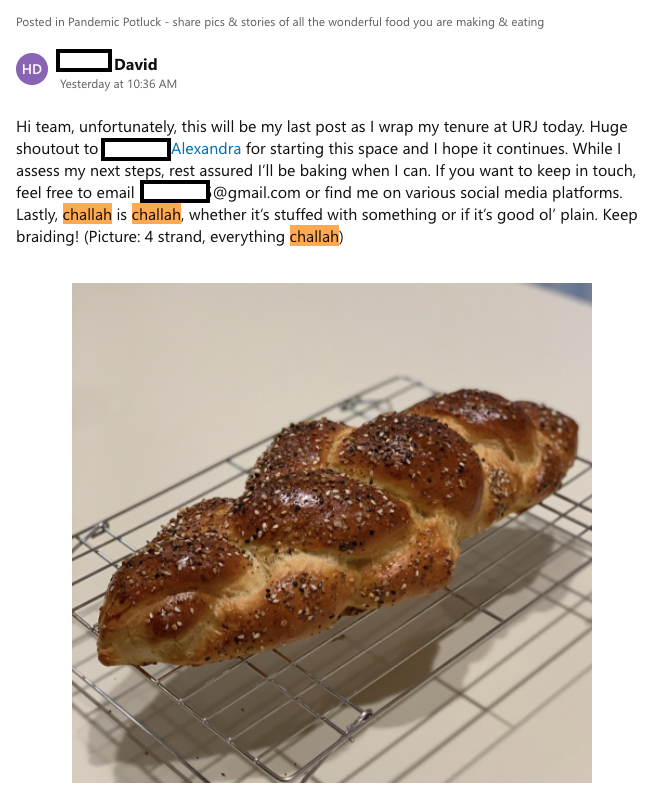
Yammer helped us “Pandemic.” Yammer helped us share. Yammer helped us engage. Yammer helped us do more. Yammer helped us to do better.
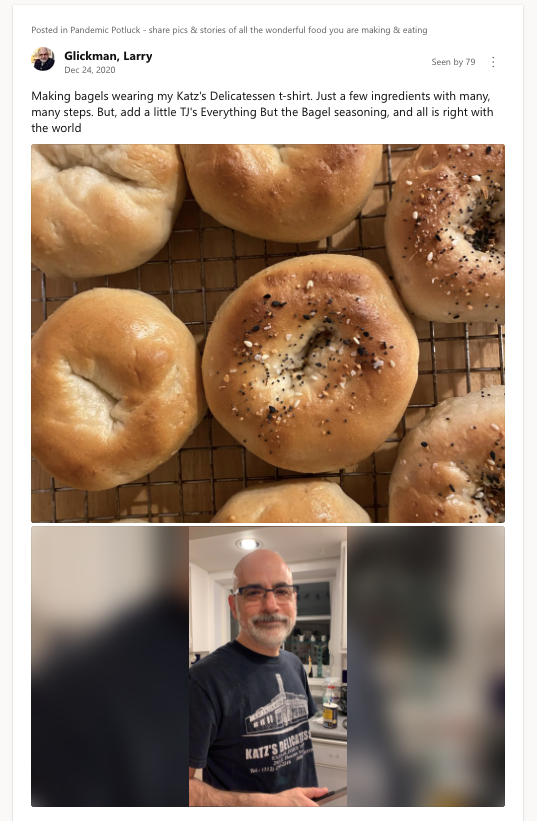
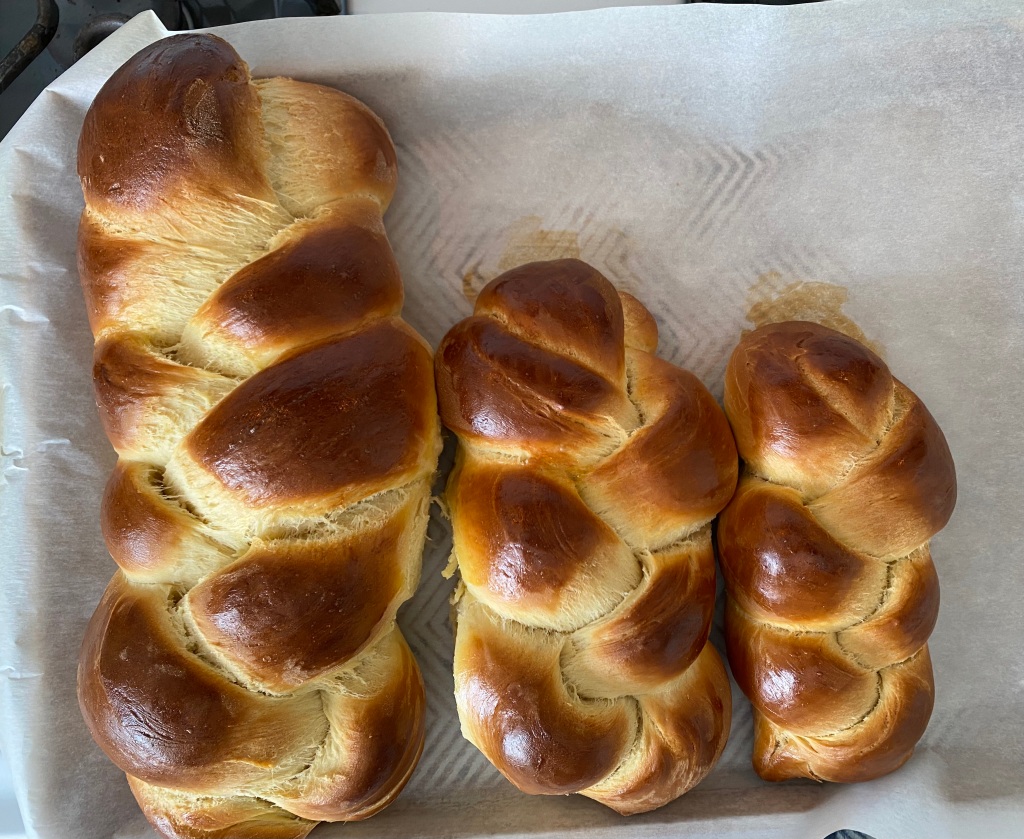



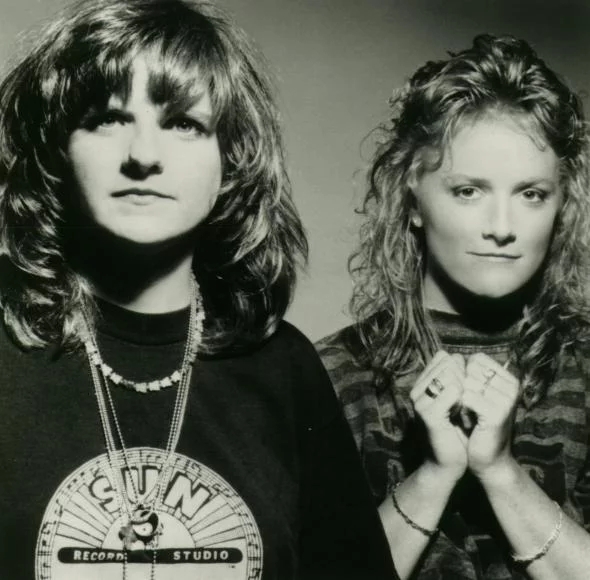
Leave a comment